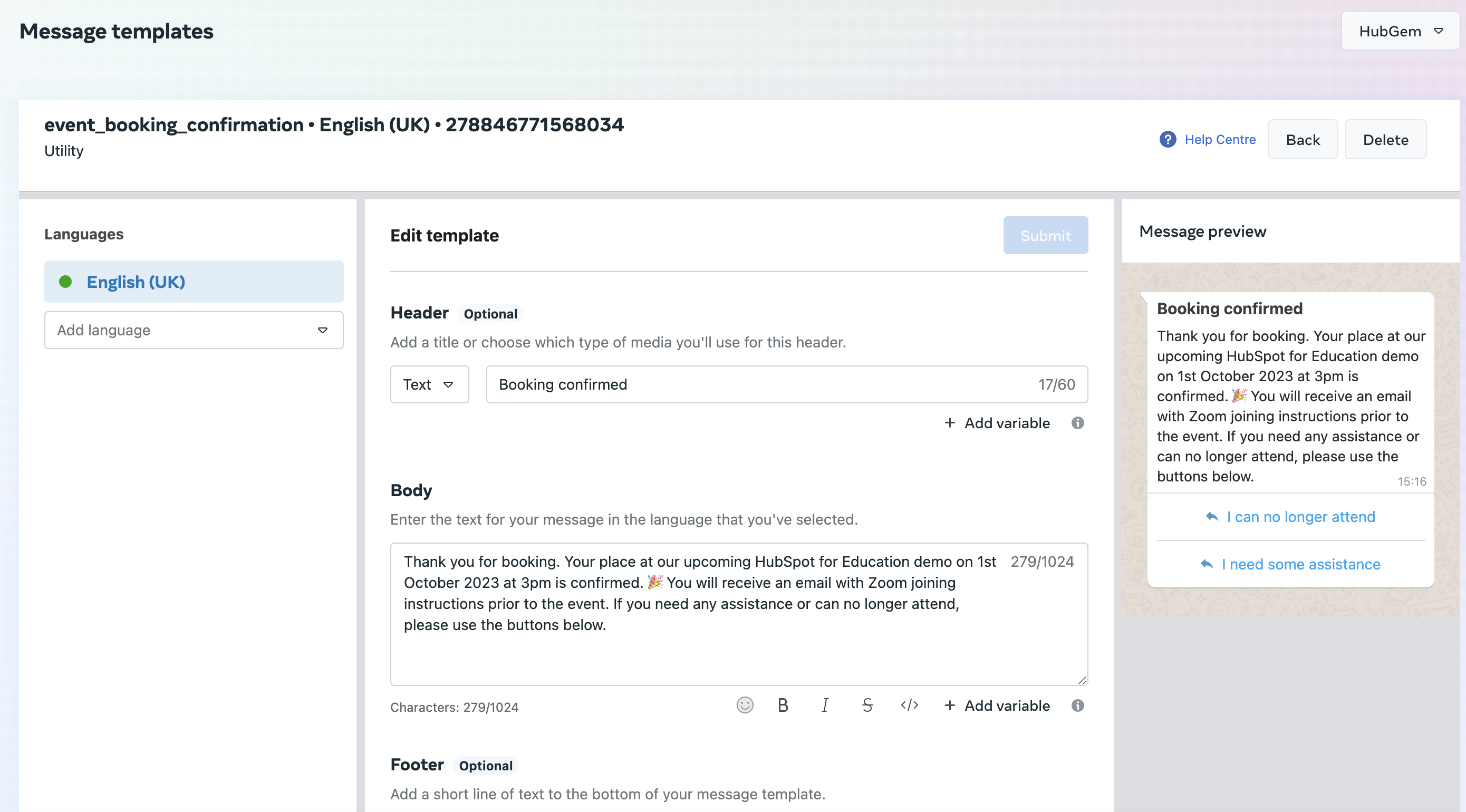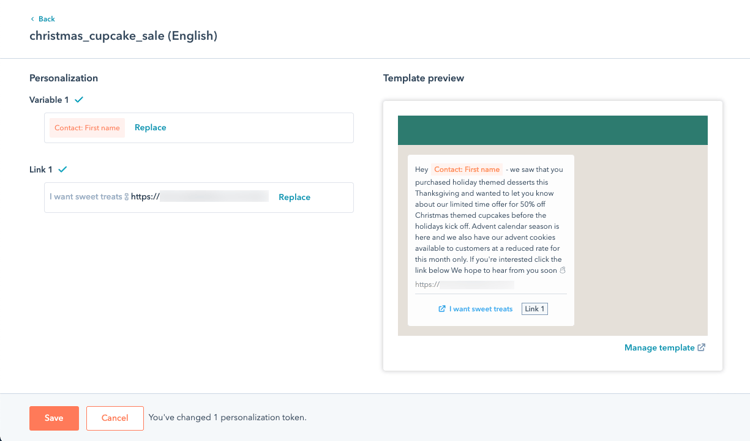HubSpot's new native WhatsApp features are proving popular with colleges, universities and training providers alike. Here are our top 5 tips on getting the most out of the tools.
We love the new WhatsApp features in HubSpot and have been asked about them lots in recent weeks. To use the features you will need a WhatsApp for Business account and will need to connect it to a HubSpot Inbox - here's how. Once connected you can use the tools for 1-2-1 and 1-2-many communications.
Here are my top 5 tips for colleges:
1) Set up message templates in WhatsApp in advance
If you want to use HubSpot's workflows to send automated WhatsApp messages at scale, then WhatsApp needs to approve your messaging templates in advance, in our experience this takes 24-48 hours. It helps to be prepared and get your templates set up in advance. You can set up your templates here.
If you need some help, check out this article that explains WhatsApp templates in full.

2) Set up some workflows for transactional messages
Reduce manual workload and improve your engagement with prospective students using the WhatsApp workflow action. This is ideal for confirming receipt of a student's enquiry or application, or for acknowledging their recent sign up for an open event.
Use workflow delays to send relevant messages in the lead-up to open events and share useful information and updates to ensure students have the best possible experience with your college pre and post event.

3) Monitor incoming messages in the Conversations Inbox
Once connected, your WhatsApp for Business messages can be delivered directly to your conversations inbox in HubSpot. By bringing them into one central location, your admissions team can monitor incoming enquiries, see all responses in a single thread and ultimately ensure that your prospective students are able to engage with your team in real time, on their platform of choice.
By allowing students to message your college via WhatsApp, a platform they will likely be engaging with regularly on their mobile phones already - instead of forcing them to use email for example - you can expect to see higher levels of engagement.

4) Create tailored and relevant journeys that leverage multiple channels
With HubSpot you can bring everything into one place, enabling you to leverage multiple channels all in one tailored journey. Use the advanced branching logic available in workflows to separate out those who attend an open event from those who did not attend, send different automated WhatsApp messages to each audience with ease, and follow up with emails or tasks for your admissions team to pick up the phone.
These multi-channel journeys optimise engagement, and of course your team can see all aspects of the engagements on the contact's record in HubSpot.

5) Don't forget to personalise your outreach
WhatsApp templates support personalisation tokens and you can use data from your CRM (contact and company records only) to personalise your messages. Personalised messages are more likely to be engaged with and help students to feel 'seen' by your college.
You could start simple - using tokens such as 'name' and then once you are familiar with adding the tokens into your WhatsApp templates you could try pulling in some other fields from your CRM, such as 'subject of interest' or 'course applied for'.
Here's some further guidance on adding personalisation to your messages.

In summary...
Bringing WhatsApp messaging into your HubSpot account is a great way to further enhance your college's engagement with prospects and enrolled students. I'm personally a big fan of the WhatsApp automation - the ability to use advanced branching logic to send out different templates to your audiences is hugely powerful for colleges.
These features haven't been around very long so we are keenly awaiting any further additions to the WhatsApp features in HubSpot, and would love to see greater integration with reporting. Watch this space!
Similar Blog Articles:
➡️ Marketing to Gen-Z: what colleges need to know
➡️ Marketing flywheel: what does it mean for my school or college?
➡️ What is a CRM and Why Should Schools and Colleges be Using One?
.png?width=150&height=101&name=HUBGEM%20Logo%20-%20smaller%20logo%20(1000%20x%20673).png)


.png)
%20-%20AB%20testing%20on%20emails%20and%20ads.png)

%20-%20Marketing%20studio%20analytics.png)
